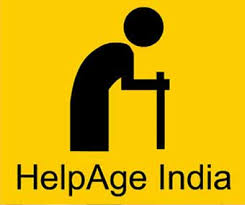 India Post News Service
India Post News Service
NEW DELHI: HelpAge India is a registered national level voluntary organization working for the cause and care of disadvantaged older persons in order to improve the quality of their lives. Recently it commissioned a study on efficacy and usefulness of the “Maintenance and Welfare of Parents and Senior Citizens Act, 2007”, which is one of the pioneering laws in India, meant for the overall welfare of the senior citizens in the country.
Old age population (60 years and above) in India grew to the level of almost 9 per cent of the total population in 2011 compared to 7.4 per cent in 2001 with interstate variations. In absolute numbers, India has 104 million old people with 53 million females and 51 million males; 71 per cent living in rural areas and 29 per cent in urban areas in 2011. The decadal growth of old age population was alarmingly as high as 36 per cent during 2001-11, compared to 25 per cent in previous decade.
Studies highlighted that in a place like Kerala where literacy is very high and media coverage very extensive, only 30 per cent of the elderly have any knowledge of this Act and even they do not know the procedures of filing petitions. Awareness about the Act in rural areas is abysmally poor.
In the primary survey among all the petitioners, 57.4 per cent cases are settled, 33.9 per cent are pending cases and only 8.7 per cent are withdrawn. This shows that, the reconciliation is poor in the states and the involvement of district social justice/welfare officers is minimal or negligible, though their role is much more than what is actually happening in the states. This needs to be addressed immediately to enhance the out of court settlement which enables the family bond intact.
Among the petitioners, 52 per cent applied for maintenance allowance and 48 per cent are for property related disputes. Maintenance related petitions are highest in Punjab and property related petitions are highest both in Kerala as well as Tamil Nadu. It was noticed that, majority of the petitioners reside in urban, semi urban (urban outskirts) and municipality areas, 47 per cent of them reside in urban areas or cities, 36 per cent in urban out skirts and 2.6 per cent in municipalities. It is important that only 14.7 per cent of the petitioners reside in rural areas though majority of Indian population are in rural areas. This shows that information about the Act has not yet reached to the rural areas and State governments should plan rural out -reach programs so that rural population are able to get benefit of this Act.
It was noticed that, the most common type of harassment is physical abuse which includes beating and hitting. 67 petitioners mentioned that (58.3) per cent underwent some kind of physical abuse such as beating, hitting and all kind of physical assault by their own children or son/daughter in law. Another 32 of them (27.8) per cent underwent mental torture, 8 (6.9) per cent each faced negligence, shouting and using bad words. This seems to be too much for the older people to take it at this age since they are already suffering from some kind of illness. Physical abuse is highest in Punjab, mental torture is highest in Kerala and negligence is highest in Tamil Nadu.
Though the behavior of the tribunal staff towards the aged are satisfactory, there are cases wherein the officers were very rude and asked them to wait indefinitely. The petitioners who applied for maintenance allowance, most of them opined that they are getting the allowance on a regular basis and many received few months and stopped after that. All the petitioners agreed that it is a good Act and will recommend to others provided implementation is strengthened.






